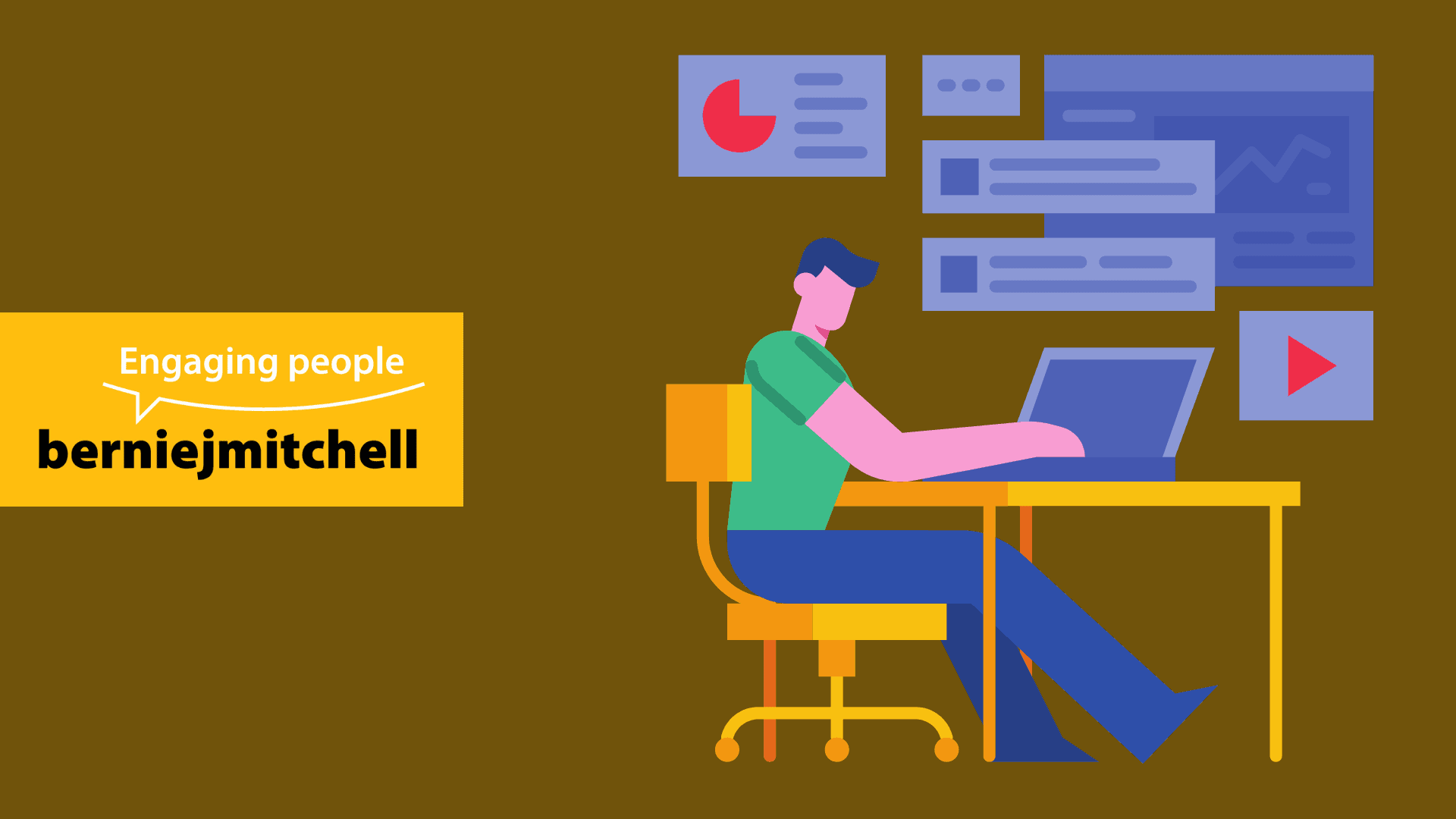I had a few calls last month with people opening a coworking space in their local area.
This post has the answers I found myself giving every time; all of the people I spoke with were independent owners with their own money.
They are opening in their local town or village because they do not want to travel anymore.
You’ll have noticed our global pandemic.
The pandemic brings an endless debate on the future of work; together with a wheelbarrow load of uncertainty.
Even people like me, who have only a passing understanding of economics, know that we’re in for a rough ride ahead.
But at the same time, if you have a website and know how to use it, you will do well.
Professor Scott Galloway writes about this in his book Post Corona published at the end of 2020.
He shows how online, e-commerce and tech grew more in 2020 than in the last 20 years.
Please don’t get too excited; he also details who is suffering and where we need to pay attention as a human race.
The future of work is now.
While the world is in the shit if you have a website that solves a problem and communicate well, you’ll be fine.
As you wade through the fluff and noise, it is evident that the way people work has changed forever.
It is a change that was coming anyway.
Still, COVID has accelerated the adoption of remote work and stopped the commute dead in its tracks.
Our friends at Town Square spent summer 2020 thinking about one question – what if everyone could walk to work?
I’ve been doing video calls, running around coworking spaces or working from home for a decade now.
I thought this was what most people who hammer a keyboard for al living did?
For many of my friends and family, this is a new paradigm.
This time last year they thought Zoom was a song by Fat Larry’s Band.
The rise of the neighbourhood workspace
In March 2020, as the world evacuated to home, people told me about these ‘new things’ called Microsoft Teams, Google Meet and Zoom.
People also started to tell me about remote work and coworking.
It seemed an understanding of this strange world I’d been operating in for years had gone mainstream.
We podcasted with David Brown in summer 2020 as he opened his new coworking space in Queens Park London.
He got sixty new members in a few weeks – Podcast here: David Brown – The 15-Minute City And The Good Space Work Club – Listen here.
Harder than you think
As I write this, we’re working on two websites for our products PayPugs and Velvet Platform.
We’re a team of people building, writing and posting things and I still need to blow into a paper bag to calm down.
My head is always about to fall off because it is hard to see what something is until it is out there and put to work.
My main message is to do one or two things well and park everything else.
Everyone has an opinion on what is most important, so be careful who you listen to, especially me.
1. Be careful about how you spend your budget.
And you need to have a budget for marketing it is the fuel for people knowing how you can help them with your product or service.
Don’t confuse ‘having a budget’ with ‘not having to pay’ I’d say don’t spend money on stuff you don’t understand yet.
I’ve met too many people who sign up for the pro version of Hubspot or pay £10k for a website before they have a customer.
They are outsourcing their success to technology rather than taking responsibility for their marketing.
2. Start with a simple website first
Even if you have a one-page website where people can put their email address in that is enough.
The combination of having somewhere to send people and get their email address so you can send them an email newsletter to say ‘we are open’ is the marketing equivalent of a small gas burner and tin can to cook with when you are camping.
Next, you need to get a blog section on there and write about what you are working on, then post this and send it to the email list.
Listen to: Kenda Macdonald: Understanding Your Customer’s Journey.
How To Market Your Coworking Space the Simple Way
3. How much does a website cost?
It depends.
Sorry, every line has to start with that.
Budget between £40 and £100 a month for your website at the start.
I’ve met many people scared about paying this money, but they’d spend that on a takeaway pizza and some beers without thinking.
The two places I’d recommend are WordPress or Squarespace.
I prefer WordPress, and it is the one I’ve been learning for the last fifteen years.
As you grow, WordPress will grow with you; at this very early stage, you don’t want to be even thinking about these things.
It is like working out what University you child will go to a few hours after they’ve been born.
Square Space could be a more simple option at this early stage because it has things like an email list built-in.
Once you get past this very early stage, expect to pay between £1500 and £5000 for a website to run your business.
All those people who ‘got a WordPress website done for £500 on Fiver.com are full of shit and will pay the price later.
Our coworking friends Included won’t build you a WordPress website, but they’ll maintain it for you – more here.
The book Marketing Made Simple maps out how to make a website and includes worksheets you can give a web designer.
Donald Miller and JJ Peterson
4. Where to host your website?
Now you will need to do some research, W.P. Engine host my websites, here, you can set up a website and keep it online from £25 a month.
I’ve been using W.P. Engine services for years, and they are rock solid.
Of course, you can find hosting for £5 a month, but you get what you pay for in quality, plus good support means you’ll sleep well at night.
And W.P. Engine has incredible support in a chat can quickly point you in the right direction.
Even if you only have a one-page website, having it set up correctly from the start is what you need to do.
Look up How much does it cost to build your WordPress website?
By Jammy Digital
And see Included web people for WordPress support for coworking spaces.
5. Start an email newsletter – NOW!
Get people’s email addresses, but only interested people.
You will hear people shouting the words’ sales funnel’ when talking about marketing, you will be dazzled by their YouTube videos and technology.
Your email list is your sales funnel.
When you ask people to put their email address into your website, you start making a sales funnel.
You will already know these people; you talk with them at the school gates when you pick your kids up, they are in your networking groups.
Then every week you will email a couple of paragraph’s and maybe a picture saying something like:
Hello Sam,
We’re working here on ‘Local Coworking Space’ and will be ready in a few weeks.
We’re excited to open, and we’d like to invite you to come and have a look around when it works for you.
Why is this useful for you?
Maybe you are like us and last year stopped running for the train and commuting into town for work.
Have you been working from home for a long time now and looking somewhere to get your work done that is close to home?
To be around other people who are in a similar mindset and work better when around people?
Our main reason for creating this workspace was to get our work done and connect with other local people.
Of course, if this is not something you are looking for please feel free to unsubscribe, we’ll send a helpful update every week.
Hit reply book a time to look around or tell us what would be useful.
Thanks to from **Your name here**
When you send something personal it will show you give a shit.
It is worth putting in extra effort to speak.
If you have one hundred people join your email list and only have twenty desks tell you’ll be off to a good start.
Is what we’re doing too.
We’re about to open Velvet Platform and I’ll be personally emailing back everyone who puts there email in our website to asking a simple questions.
Not to ‘hard sell’ but to find out what matters to them.
And this is because we want to be in tune with people not ‘telling them stuff’ after while we’ll have a good feel for what is essential to people on the list.
An excellent book for working this out is The Mum Test.
By Rob Fitzpatrick
6. Should I be on social media?
Yes and no.
Have that one-page website with an email list.
Then pick where else you’ll have fun and be on that social media platform.
When you have a team, a budget then you can be everywhere.
If I still worked for a coworking space, I’d take a picture and post it on Instagram every day, after that and I’d be on LinkedIn.
One real and straightforward Instagram post about what is happening in your coworking space every day will do more to connect with your audience than any advert.
LinkedIn is professional people from all walks of life, all with a budget for something.
Social media advertising?
And don’t do any social media advertising until you have a website, paying for an advert that says ‘space to rent’ is like throwing a fridge out a window.
What?
Exactly there is no point to it.
People may see the advert, but any advert that is not a part of a planned customer journey is a waste of money.
Listen to: Kenda Macdonald: Understanding Your Customer’s Journey.
How To Market Your Coworking Space the Simple Way
7. Get some software to run your coworking space.
WHAT?
There is software?
What does it do?
Read this post here – The Best Coworking Space Management Software: Nexudus Vs Cobot Vs OfficeRnD
I know at least another ten software platforms for running your coworking space on, so please don’t think these are the only these three.
If you have under one hundred seats in your coworking space spending £30 – £60 a month on software is a bargain.
You will be able to automate booking desks, meeting rooms, invoicing, and communication with your members.
There is a learning curve, and most platforms come with a month-long free trial.
8. Further resources:
Coworking or shared workspace- whatever you want to call it has been growing non-stop for fifteen years (at least) here is a list of projects, people and things to help you save time and not reinvent the wheel.
Here are the ten main Coworking Assembly projects in Europe and the U.K.
- Coworking Library – (Coworking research)
- Rural Coworking – (listen here)
- Coworking Symposium 2021 – (an online event)
- Coworking Values Podcast – (see below)
- Inclusion and Diversity Handbook – (listen here)
- Coworking I.D.E.A. Project (Inclusion and Diversity)
- Cowork Tools (GDPR / AML)
- U.K. Coworking Assembly
- London Coworking Assembly
- European Freelancers Week 2021 (Annual event)
9. Go and do some work.
Along with sorting out the building, getting staff and ordering the furniture you do well by investing time in:
Making a straightforward website
Building an email list and sending an email every week
Using coworking space software
You will be in a better place to keep your costs low and attract members.

